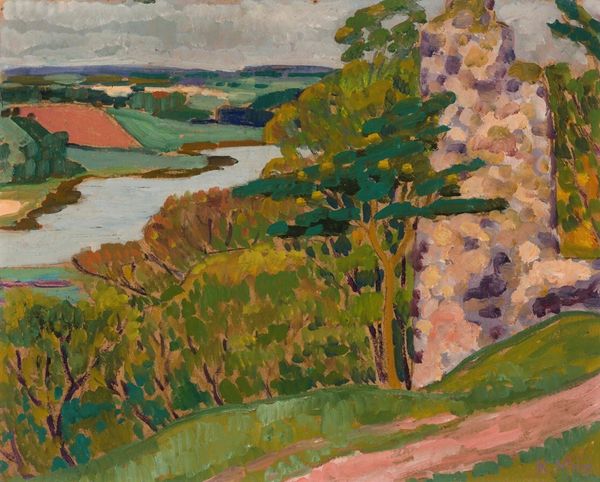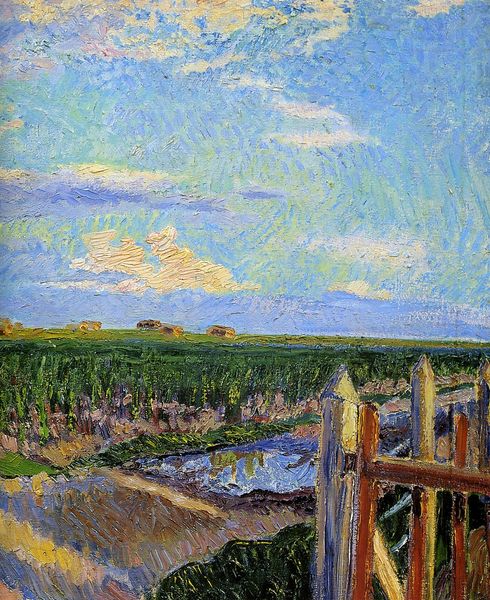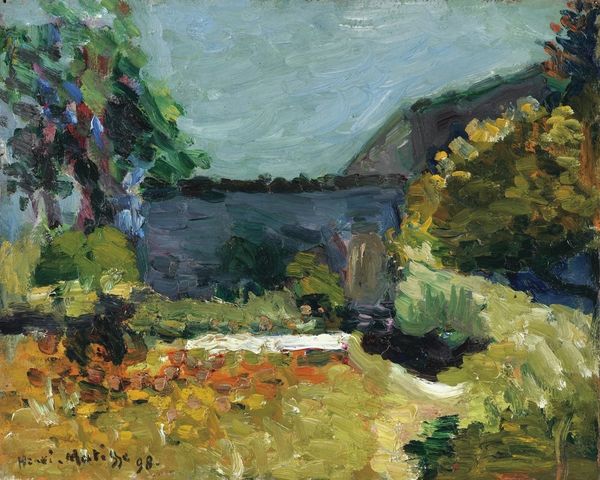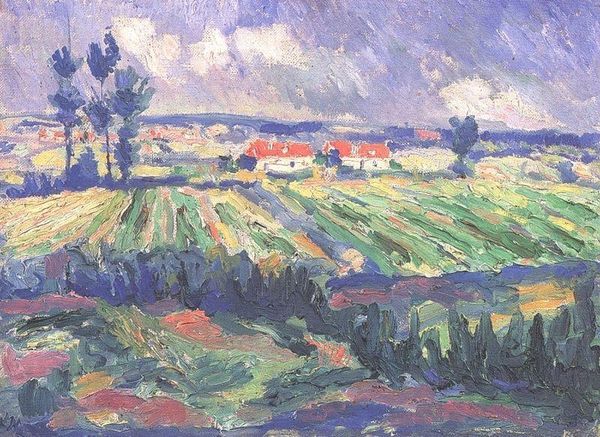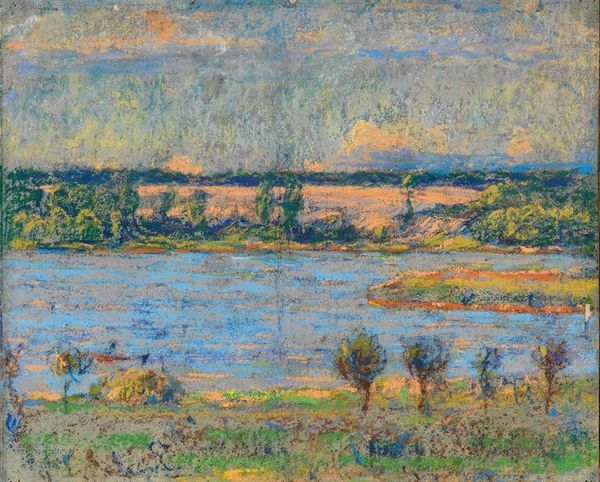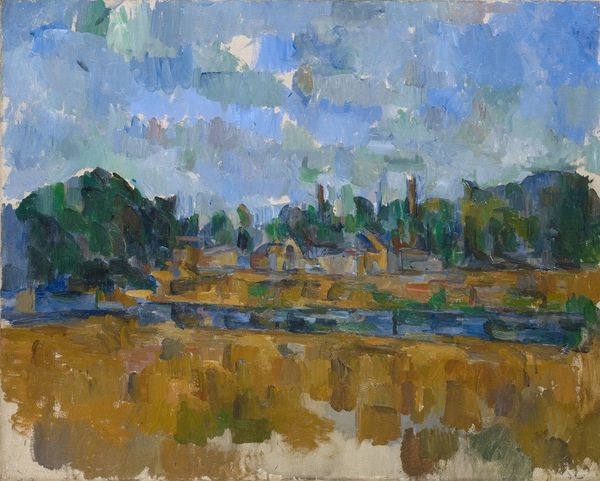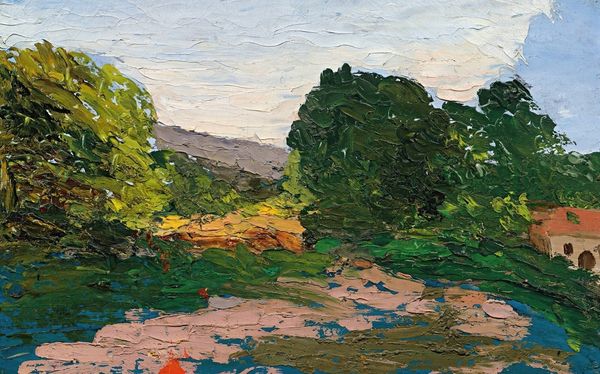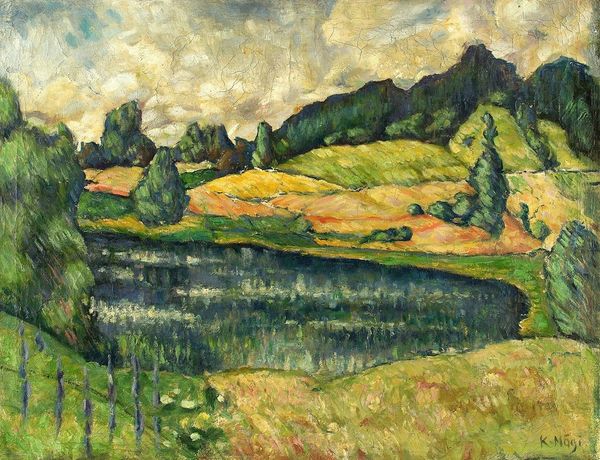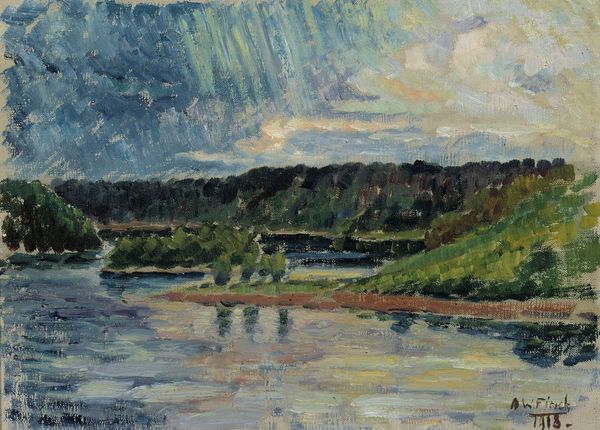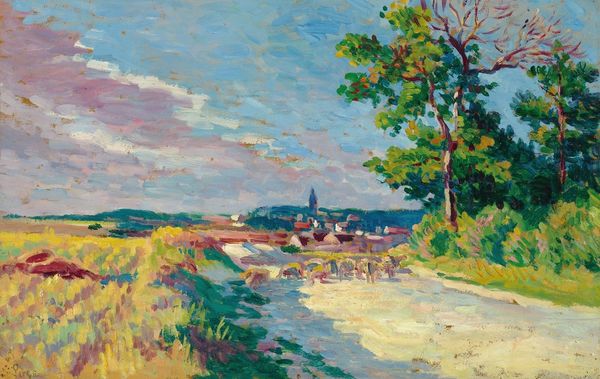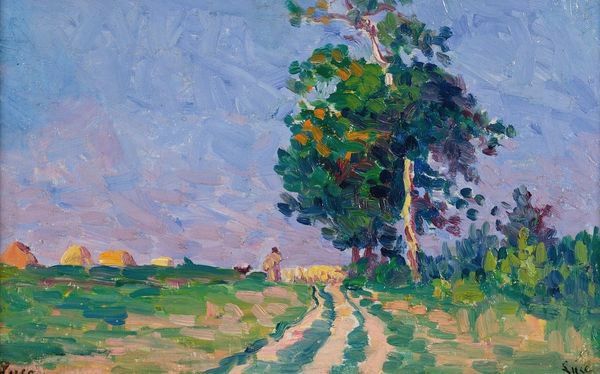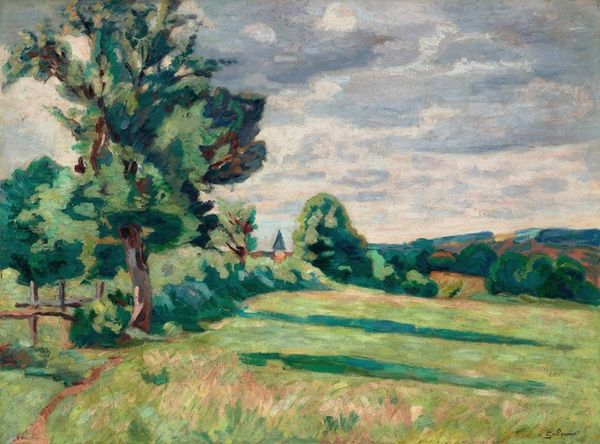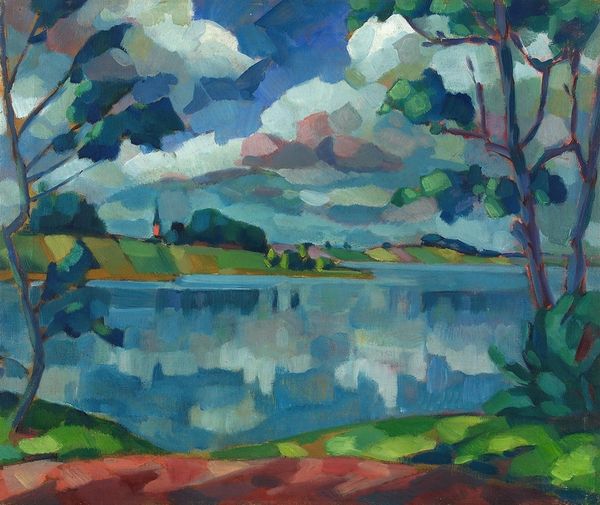
Copyright: Public Domain: Artvee
Konrad Mägi created this landscape study with oil paints, probably in the early 20th century. The free brushwork and vibrant colors evoke a sense of natural beauty, but it’s crucial to view it in light of Estonia’s complex history during that time. Estonia was caught between various powers, including the Russian Empire, and local art institutions were in their infancy. Mägi, like many artists of his generation, sought to develop a distinct national identity through art, turning to the landscape as a source of cultural pride and unity. The vibrant colors and bold brushstrokes can be seen as a rejection of academic conventions, aligning with broader European trends like Impressionism and Expressionism. Mägi's interpretation, however, infuses the painting with a unique sense of place. To fully appreciate this, one might explore Estonian folklore, literature, and music of the period, as well as the archives of local art societies and museums. These sources can reveal the layers of meaning embedded in what appears to be a simple landscape.
Comments
No comments
Be the first to comment and join the conversation on the ultimate creative platform.
